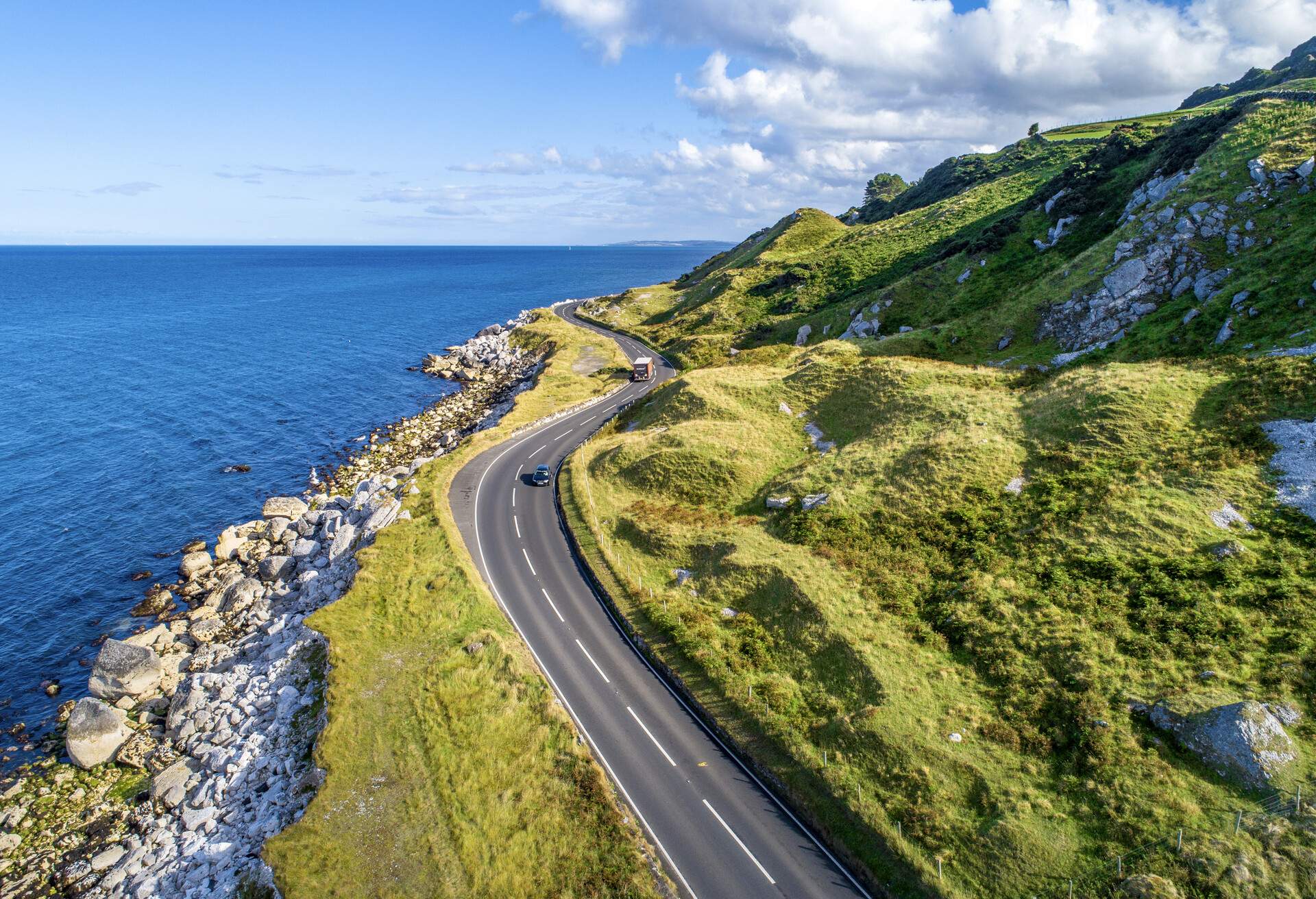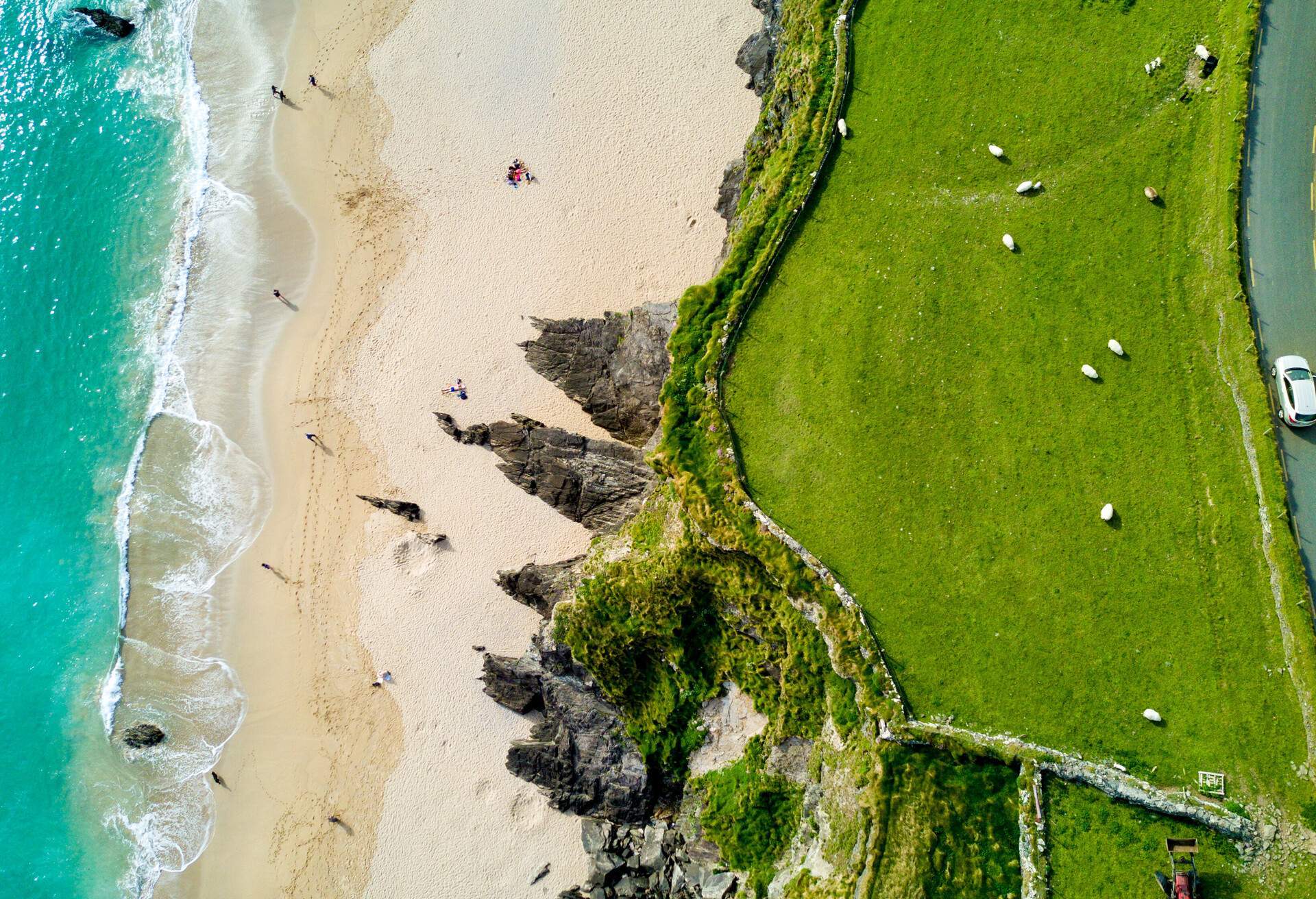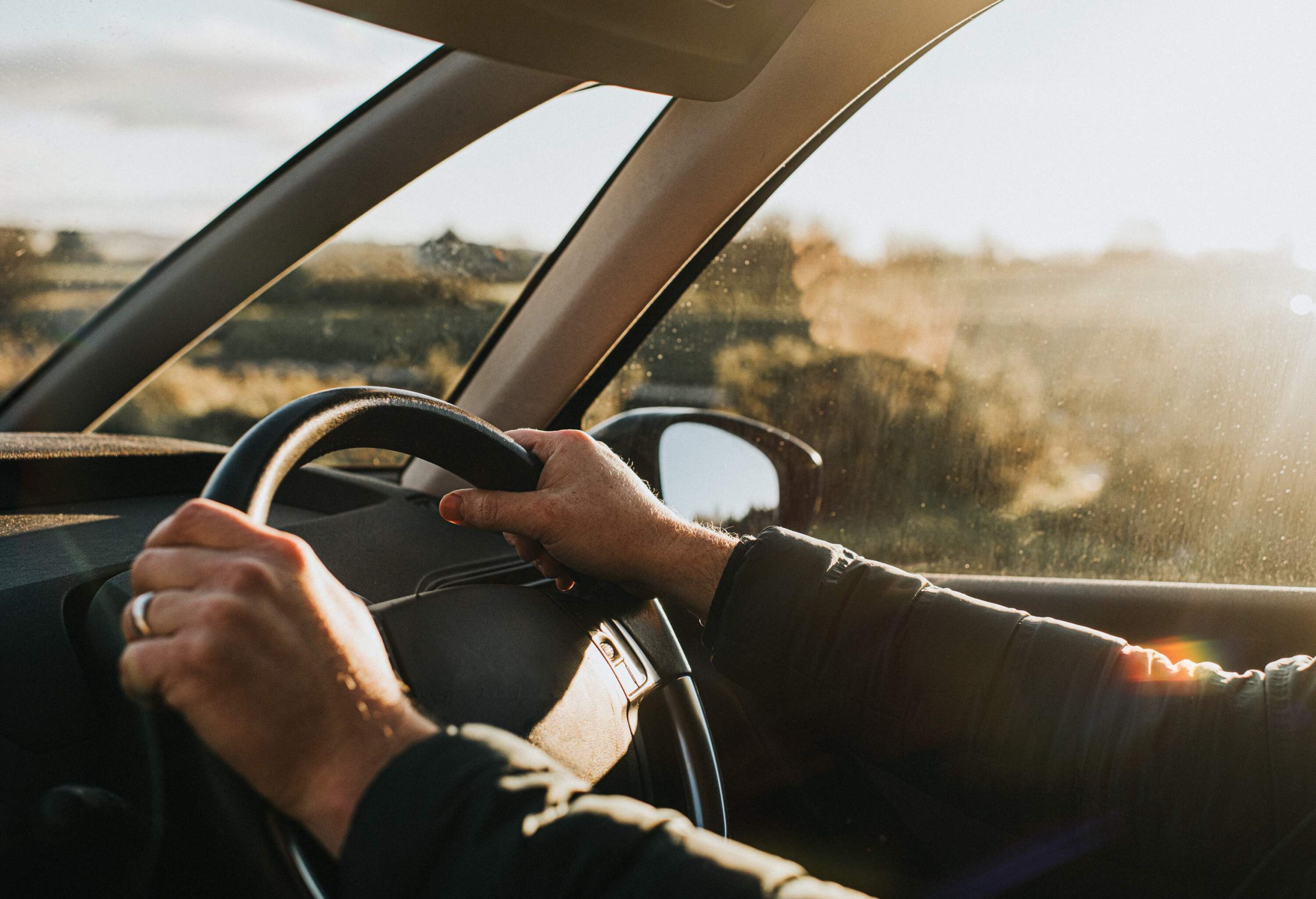If you’re thinking about renting a car for your Irish vacation, look no further than this guide. Read on to find out more about all the ins and outs of driving in Ireland.
Cheap car rental in Ireland
Requirements for driving in Ireland
Before you head off on your vacation or business trip in Ireland by car, make sure you have examined all the rules and requirements related to driving in Ireland as an American.
Documents needed when driving in Ireland
Car equipment
In addition to the documents previously listed, you are recommended to carry the following items with you in your car:
- Spare bulbs for external lights
- First aid kit
- Warning triangle
- Fire extinguisher
Renting a car in Ireland
Here are the ins and outs of renting a vehicle in Ireland.
What do you need to rent a car in Ireland?
In order to rent a car in Ireland, you have to be at least 21 years of age and have a valid driver’s license. Be advised, however, that most agencies have set their minimum driving age at 23. In addition, some car rental companies require you to have held your license for a minimum of two years.
You will also need to present another proof of identification like a valid passport, and you’ll need a credit card to pay for the deposit (most agencies do not accept debit cards). Unlimited third-party liability insurance is required with any car rental and is often included in the price, but it’s good to check.
Am I allowed to drive to Ireland from the UK with a rental car?
While not all rental car companies allow it, there are agencies that will let you take your rental car from the UK into Ireland. Please be aware that you will probably have to pay an additional fee. This often amounts to around £50 (around $60 USD) plus tax for short periods, or around £150 (around $190 USD) plus tax for longer-term rental periods.


Rules of the road in Ireland
All the rules you need to know if you’re planning on driving in Ireland or doing a road trip on the Emerald Isle.
What side of the road do they drive on in Ireland?
In Ireland, you drive on the left-hand side of the road, which is the same side as in the UK and the opposite side from in the US and Europe. That means it can be confusing, at first, to drive in Ireland, but you can easily switch between Ireland from the UK if you’re planning on visiting both countries and taking the ferry. However, some other rules might be slightly different, so we recommend you keep reading.
Highways and toll roads
There are six highways and two national bypasses in Ireland that require drivers to pay a toll. This includes the M1, which links Gormanston and Monasterboice, the N25 which is the Waterford City Bypass, and the M50 which is a barrier-free toll road.
In addition to these routes, you will also have to pay to drive through the East Link Bridge, the Dublin Tunnel and the Limerick Tunnel.
When driving on a toll road, make sure you have some cash with you, as not all toll booths accept cards. If you drive on the M50, you must ensure you pay the toll fee by 8pm the next day in order to avoid a fine.
Roundabouts
When you get to a roundabout in Ireland, you should always give priority to any vehicles that are already on the roundabout.
If it is a larger roundabout with multiple lanes, the lane you should enter from depends on where you will be exiting. As a general rule, the left lane is for drivers who will be taking the first exit and the middle lane for those taking the second exit, while the right lane is for those taking the third exit.
Alcohol limits & drunk driving
The maximum blood-alcohol level for drivers of private cars in Ireland is 0.05%. This limit goes down to 0.02% for both beginner and professional drivers. Both of these limits are lower than the most common US limit, which is 0.08%.
Child seat regulations
Children aged up to three years must be placed in a rear-facing child seat in the back seat of the car. Kids aged over three can sit in the front seat as long as they have an appropriate child restraint or safety belt. Finally, please note that any children who measure under 5ft (around 150cm) and weigh less than 80lbs (around 36kg) must use the correct child seat or booster seat whenever in the car.
Parking
When looking for a parking space in Ireland, always make sure you look at the signs that indicate parking rules. In addition, please note that you are not allowed to park within 30 feet of a crossing, junction or pedestrian lights. You are also not allowed to park on bicycle paths, at bus stops or on yellow lines. Disabled parking is available and indicated by blue lines with the wheelchair symbol. Disabled car parking is normally free and has no time limit.
Fuel
All the major fuel types are available throughout Ireland. You will find normal unleaded gasoline under “Unleaded” and diesel under “Diesel,” while liquid natural gas will normally be indicated as “LPG.” If you are looking for LPG, you will usually only find it in more populated areas. If you are driving an electric car keep in mind that you will only find electric charging points in major cities such as Dublin. You can typically pay for fuel with cash in euros or by card.
Frequent questions about driving in Ireland
To rent a car in Ireland you need a valid driver’s license that you’ve held for a minimum of two years, a valid passport, and a credit card to pay for the rental deposit.
You must be at least 21 years of age to rent a car in Ireland, though be advised that most agencies will not rent a car to anyone under 23.
Yes, all U.S. citizens are allowed to drive in Ireland with their own valid driving license. If you want to stay more than 12 months in Ireland, you’ll have to apply for an Irish driving license.
It is recommended to check with your insurer if you can benefit from some extra coverage while you drive your car abroad.
In Ireland, you drive on the left-hand side of the road, which is the opposite side from in the US.




